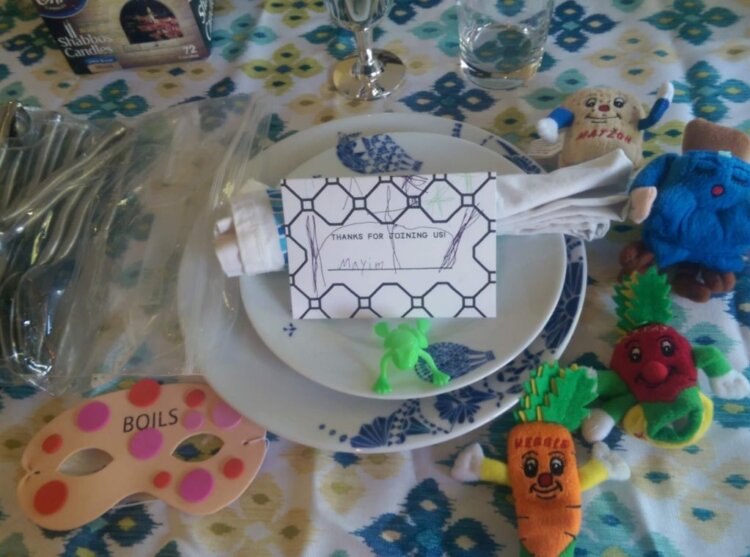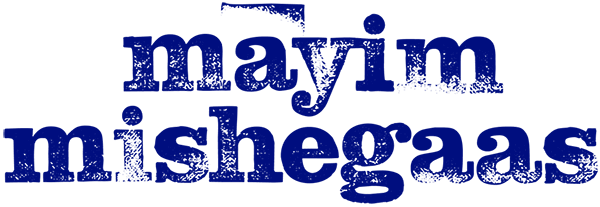
The holiday of Passover starts tonight! Passover falls every spring usually around the time of Easter. Passover is an eight-day holiday during which time Jews do not eat foods that contain the following grains: wheat, rye, barley, oats, or spelt. This means that things like bread, bagels, pasta, doughnuts and cookies are all avoided for eight days. If you are a Jewish person with Eastern European roots (like me), for the eight days, you probably also refrain from eating rice, beans, peas, and a ton of other things like sesame seeds and mustard seeds that fall under the designation of what is called kitniyot – while these items are not, strictly speaking, breads or leavened, many Jews avoid them. This year, the Conservative Movement (a moderate liberal branch of Judaism) has issued a ruling that even Eastern European Jews can eat kitniyot, but the ruling is so new that many may not embrace it this year. (For a more in-depth explanation, see this piece from the Jewish Journal.)
Sounds restrictive, right? It is. But Judaism is an ancient religion going back thousands of years, and the notion of our peoplehood is to continue to participate in traditions and rituals that our people have participated in for thousands of years. It gives us a sense of cohesion as a community, and it allows us to keep telling the stories that we tell which have tremendous meaning and significance and can teach us a lot about relationships, our place in the world, and our responsibilities to others.
Here are my top 5 things you should know about Passover, whether you celebrate it every year or whether you are just learning about it now.
- ORDER! Passover is the only Jewish holiday whereby the religious obligation to observe the holiday takes place in the home. We do this by holding an elaborate and festive meal which is also kind of like a religious service. It is called a seder. Seder means order in Hebrew, because there is an order to the meal and there are 15 different things that are done at the meal to satisfy the requirements of observing the holiday in this way. In Israel, you only hold the seder once, the first night, but everywhere else in the world, you do it for two nights. Some seders last hours and hours into the night, and some people do all of the seder ritual stuff up until dinner is served and then everyone eats and then you go home. In my house, we always did the whole thing, but sometimes it was more abbreviated than others. On average, the seders that I have led since leaving my parents’ home have lasted about four hours, start-to-finish.
- FUN! Passover seders are fun. And I’m not just saying that in the way that religious people who are high on God say it. Passover is a holiday that is designed around the needs and interests of a family which typically has children in it. Therefore, the seder has songs and group participation and discussion that can be catered to the needs of the participants. In some families, the seder includes people acting out plays or dressing in costume or doing puppet shows. It is designed to be a fun evening and if you ever go to a seder and don’t have fun, you can let the host to know before you leave that you think they did it wrong!
- NOT SO FUN! The rest of Passover, meaning the week or so that follows the seder experience is not as much fun as the seder itself. Traditional families don’t eat out in any restaurants during Passover, because the prohibition against eating grains extends to eating in restaurants where grains could interact with non-grain products. There are some restaurants in cities with a lot of Jews that specifically make their restaurants and the kitchens in the restaurants kosher for Passover, but they tend to be very expensive and to be quite honest, they are not very vegan-friendly in general. And so, for all of Passover, we “eat in” a lot. We also end up eating very healthy during Passover, because without bread and bread products and cookies and doughnuts and rice and all of those yummy starches, our meals consist of a lot of salads and quinoa (which is not a grain but is actually a seed) and vegetables. Do my kids sometimes get annoyed that we can’t eat out once in a while during that week? Of course. Will that annoyance kill them? Nope.
- WHAT’S THE STORY? During the Passover seder, we tell the story of the enslavement of the Jewish people thousands of years ago by a cruel Pharaoh in Egypt. (Some extra-biblical sources indicate that the Pharaoh in the Passover story was Ramses II.) The Pharaoh had decreed that all Jewish babies should be killed, but one Jewish mother sent her baby down the river Nile in a basket to protect him from the death decree which the Egyptians had set upon the Jews is raised in Pharaoh’s palace under the name “Moses.” Moses eventually flees the life of royalty to go on a journey and find himself out in the desert. He discovers his Jewish identity, marries a Midianite woman (yes, the Redeemer of Israel was married to a non-Jewish woman!), learns a lot of awesome magic from his father-in-law Jethro (who is presumably a shaman), has a vision (or some might call it a hallucination of sorts) of a burning bush in the desert, and returns to Egypt to try and free the Jewish people from slavery. There are a lot of other cool twists and turns, such as the fact that Moses has a speech impediment and resists the idea that he could free his people since he can’t even speak well. This is one of many obstacles that he and his brother Aaron and his sister Miriam have to overcome in order to free the Jews from slavery. It’s a really cool story, and it has romance and intrigue and soldiers riding chariots… Say what you will; we know how to tell a good story. (And Hollywood agrees: check out The Ten Commandments, Prince of Egypt and Exodus: Gods & Kings as three examples of biblically-inspired films.)
- BIG PICTURE! Every Jewish holiday, they say, follows the same theme: “they tried to kill us, we won, let’s eat.” While this may sound funny, it’s also pretty much true. What’s also true, however, is that along with the story that we tell with each of our holidays, comes a notion of a bigger picture meaning that we can find behind the story. In the case of Passover, we get to focus on ways that we are still enslaved even though we are no longer slaves in Egypt. There are a lot of different kinds of enslavement that we talk about at our Seder. We talk about the ways that our bad habits enslave us, and we talk about the ways that our small- mindedness and our lack of flexibility and our judgment of other people enslaves us. We also talk about all of the people around the world who are not free, either because slavery still exists (as in the case of human trafficking), or because there are governments, leaders and biases which limit people’s freedom of movement, freedom of belief, freedom of expression of religious practice or sexual orientation…
Slavery is not over, and Passover gives us the opportunity to be reminded of that. The imagery of Exodus and freedom from slavery became a central theme for many African-Americans who suffered as slaves in pre-Civil War America. (This article from the Jewish Journal describes some of the parallels.) And the song, “Go Down, Moses,” is an African-American spiritual song written about the Jews in slavery in Egypt. The first verse and chorus is:
When Israel was in Egypt’s land: Let my people go,
Oppress’d so hard they could not stand, Let my People go.
Go down, Moses,
Way down in Egypt’s land,
Tell old Pharaoh,
Let my people go.
During the Civil War, when Harriet Tubman operated the Underground Railroad in order to provide a passage for slaves to escape to freedom, Tubman used “Go Down Moses” as one of two code songs fugitive slaves used to communicate when fleeing Maryland.
One of the prominent messages of Passover is to welcome in the stranger and those who are in need. Just as we were once slaves, we need to understand that our work is not done and that those who are still enslaved need our help.
Whenever people question my religious faith or my religious observance, I am reminded of the holiday of Passover. We perform an elaborate set of rituals in order to commemorate something that happened thousands of years ago. And there are people who don’t believe it happened and I guess that’s fine, too. What I know is that by remembering this story and telling it to my children and acting on the principles of the holiday, I participate in the liberation of others one step at a time.
We still have a long way to go until all people are free and until no one is oppressed. May this spring bring forth renewed commitment to our personal freedom and to the collective freedom of all people.




 Read More From Mayim
Read More From Mayim
Grok Nation Comment Policy
We welcome thoughtful, grokky comments—keep your negativity and spam to yourself. Please read our Comment Policy before commenting.